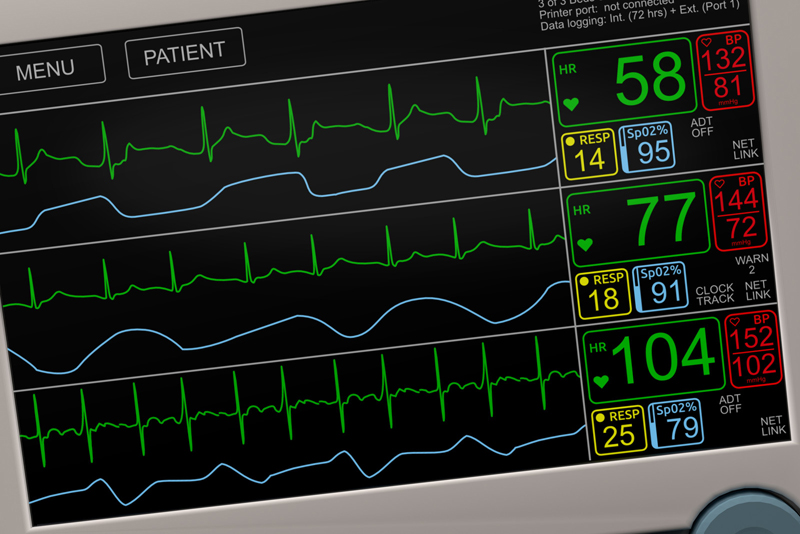Physiological abnormalities in vital signs such as body temperature, blood pressure, pulse, respirations, and oxygen saturation are common before preventable adverse events. Changes in vital signs that occur before cardiac arrest, unexpected admissions to intensive care, and unanticipated death need to be properly documented and effectively communicated between clinicians and across multidisciplinary teams during transitions of care. This can help prevent further deterioration in the patient’s condition. Medical transcription outsourcing can ensure clear, current, relevant, accurate, and complete documentation of this information. However, the problem is that medical staffs often miss these health status changes. In fact, the Emergency Care Research Institute (ECRI) listed detecting changes in a patient’s condition as a major challenge in its 2019 Top 10 Patient Safety Concerns report (www.medscape.com).

Types of Adverse Events
The Agency for Healthcare Research and Quality (AHRQ) categorizes adverse events as follows:
- Preventable adverse events: These result from an error or a failure to apply an accepted strategy for prevention.
- Ameliorable adverse events: These are not preventable, but could have been less harmful if proper care was provided.
- Adverse events due to negligence: These occur when care falls below the expected industry standards
In addition, there are safety concerns such as near misses and errors that do cause harm but expose patients to a potentially hazardous situation. Measuring recording or acting on changes in a patient’s vital signs is vital to determine the level of care needed, provide the necessary treatment and prevent deterioration from an otherwise preventable cause.
Understanding patients’ risks will help providers prioritize care and anticipate potential problems. There are many reasons why patients deteriorate. Exacerbation of the patient’s acute condition is the most common reason. For example, a patient’s respiratory distress or sepsis may be the result of pneumonia. Another reason could be medication – a patient’s condition may get worse due to certain medicines or drug interactions. Other reasons why patients may get worse include comorbidities or past medical history. For instance, a patient admitted with kidney disease may also have a history of hypertension, heart disease, and diabetes. The patient’s age, mobility, nutritional status, and frailty put additional stress on the body and increase risks of deterioration.
Reasons for Not Recognizing Changes in Vital Signs
The factors that cause ward staff to miss changes in patients’ health status are complex and often interrelated. They include:
- Failure to monitor vital signs consistently or detect changes in health status
- Inability to recognize signs and symptoms that warn of deterioration
- Lack of knowledge about responding to alarms
- Doubts about calling for assistance
- Delays in informing medical staff about changes in vital signs
- Delayed response to these physiological abnormalities
- Lack of knowledge and skills about acting upon changes in vital signs
- Not communicating with other staff about concerns, including during patient transfer
- Failure of monitoring equipment
Improving Capture and Interpretation of Vital Signs
Vital signs have become a subject of active research, and play an important role in emergency departments and on the wards. One study found that more than half of patients who had a serious adverse event could have been identified as high-risk up to 24 hours previously (www.nursingtimes.net). All significant changes in patient vital signs must be captured, monitored, interpreted, reported and documented. Here are four strategies to improve vital sign monitoring:
- Nursing staff should measure vital signs at least once every 12 hours unless instructed otherwise. They should be recorded on admission and clearly documented. Vital signs should be considered part of an overall assessment and made part of an early-warning scoring system.
- Staff members should review triggers, warning scores, and areas of concerns during their shift. This will promote discussion on how to deal with these issues, allowing for a review of the trend of patients’ progress and support for acting upon any deterioration in vital signs.
- Patient safety should be the core concern during handovers and care should be taken to hand over early warning scores.
- Handover documentation must be clear, accurate and complete. All escalation must be properly documented and staff caring for the patients should be knowledgeable about the next steps.
- Improved communication can prevent adverse events. Settings where fast and effective communication and management is critical include the perioperative period, the intensive care unit (ICU) and the emergency department.
Importance of Good Documentation
There is evidence that poor documentation at transitions of care can increase readmission rates to hospitals and increased presentations to the emergency department. Outsourced medical transcription services are a feasible strategy to ensure effective communication among clinicians. An experienced service provider will ensure that all necessary information about the patient, including vital signs, is fully and accurately documented, facilitating early response to the patient’s condition and patient safety improvement across all settings.
Disclaimer – The content in this blog that is provided by Managed Outsource Solutions (MOS) is only for informational purposes and should not be seen as professional medical advice. MOS is only passing on information that is already published and does not accept any responsibility for any loss which may occur due to reliance on information contained in this blog.


